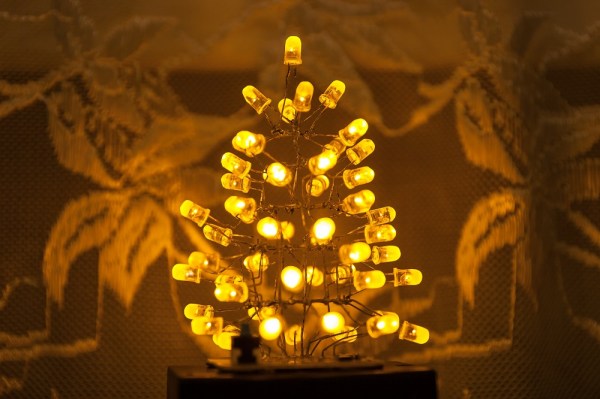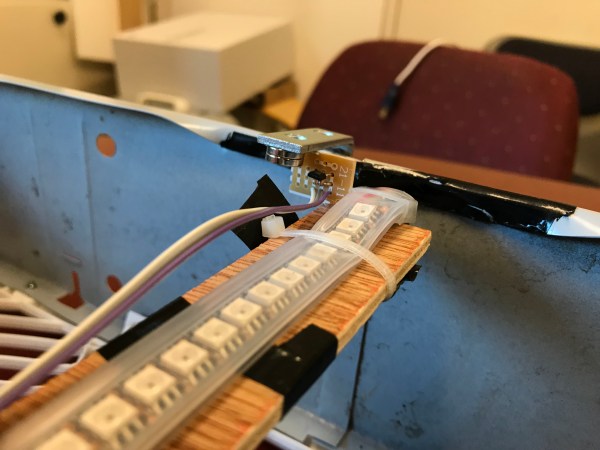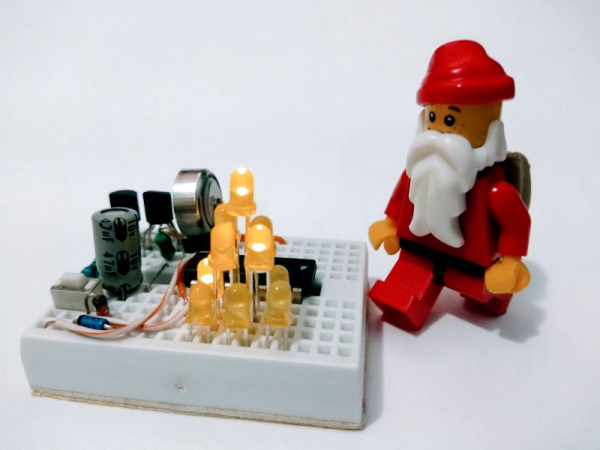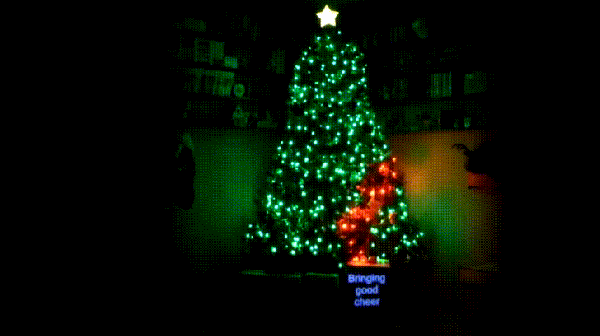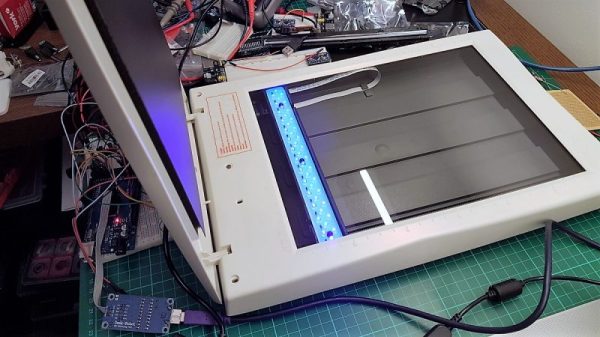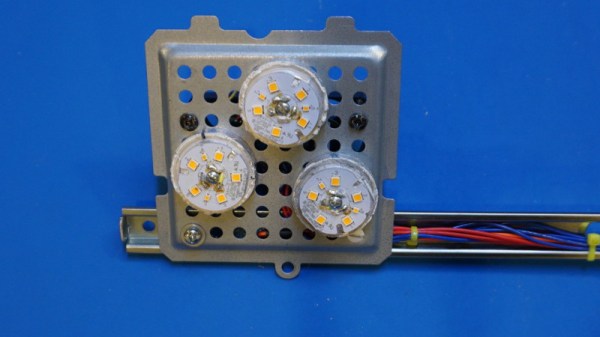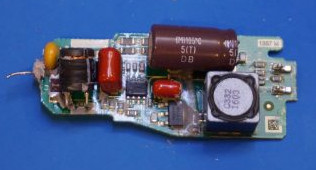Soon the most wonderful time of the year will be upon us. Families all over the globe will gather together to exchange gifts, eat good food and enjoy some quality time with each other. For many, it will be the first time they’ve seen each other since the last holiday season. For us hackers – this translates to a time we get to talk about ourselves and show off a little about what we do. Been taking it easy this year? Have no hacks to talk about? Well, it’s not too late! Break out the soldering iron and whip up the perfect conversation starter – an LED Christmas tree!
[Gumix] took a handful of those flickering LEDs and a step down DC-DC converter to make his simple but elegant tree. No microcontroller here… no code is running. As soon as power is applied, the flickering LEDs do all the work to create a visual delight.
Flickering LEDs have been the focus of a few hackers. They’re basically LEDs designed to flicker like a real candle. [cpldcpu] hooked a scope to one and guessed that a linear shift-register was responsible for the randomness behind the flickering, which would be confirmed several months later.
Be sure to check out [Gumix] LED tree and the video demonstration below.
Continue reading “LED Christmas Tree Is Perfect Holiday Build”

